
21.01.2024
Curator Alex Ungprateeb Flynn speaks with artist Aline Motta on erasure, diaspora, and the blurring of boundaries between what is known and what is imagined.
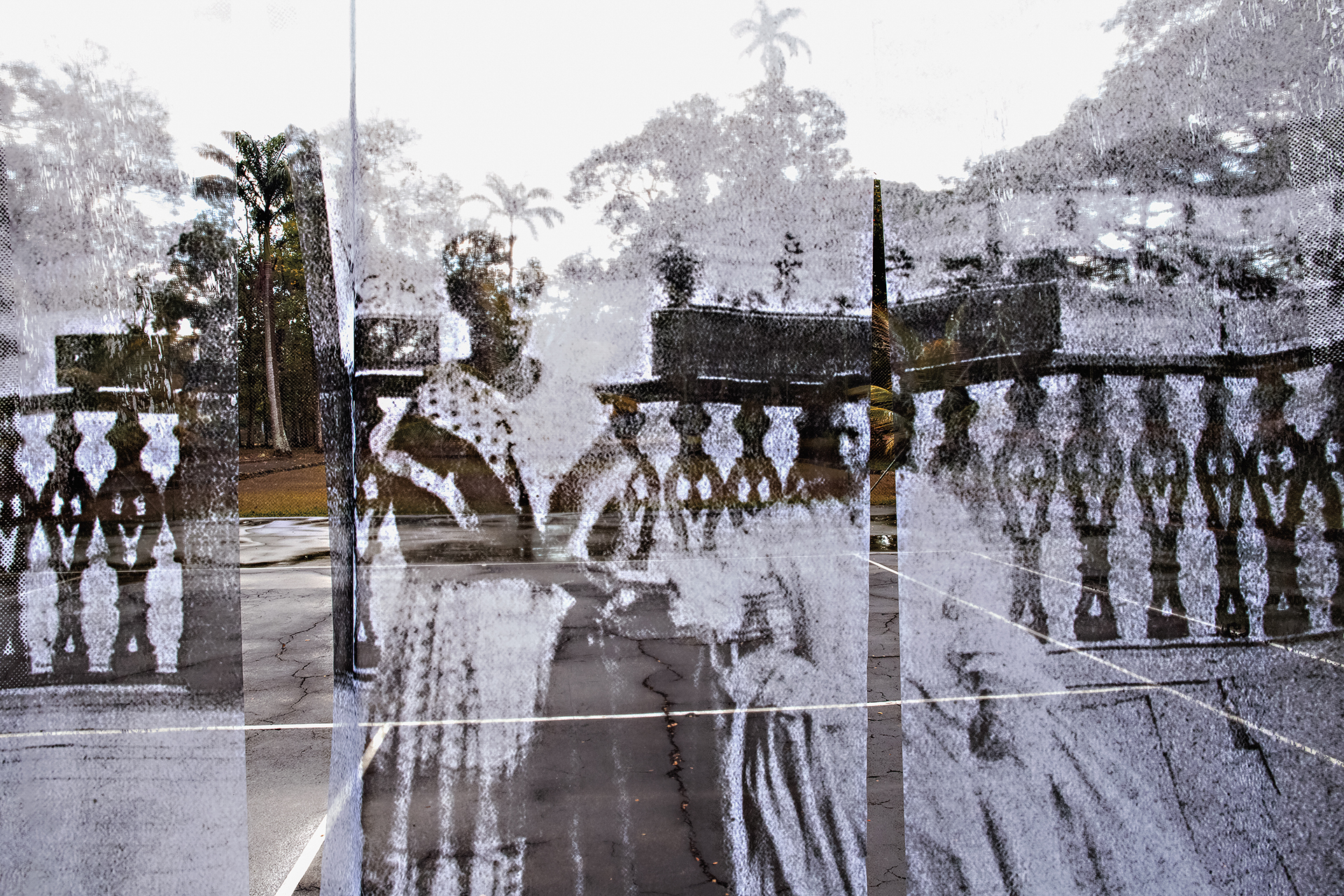
Water is a time machine in the investigation of our family histories. We make, we project, we erase, in a continual process of speculation on the positioning of our bodies in relation to others in this world. Aline Motta’s practice enters into dialogue with erasure, diaspora, and the blurring of boundaries between what is known and what is imagined through video, photography, installation, and performance. These interventions draw on archival research, ethnographic work, and critical fabulation to reimagine that which was previously lost. In a temporal subversion, Motta refuses to consider the discrete and bounded; instead, each present moment interpenetrates with another to inscribe – in a creative gesture – a future as yet uninscribed. Reflecting on notions of diaspora, belonging and identification, she puts forward a deeply personal reading of Afro-Atlantic relations, positioning herself as the author of her own history. In the blurring of boundaries between what is known and what is imagined, Motta’s works demonstrate how envisioning new pasts can free us from linear narratives towards the manifestation of alternative futures.
AUF: The intersection of ethnographic and curatorial modes of inquiry fascinates me: What might be the prefigurative potential of art? What kind of knowledge can be produced from such encounters? When we speak about your work in dialogue with these ideas, I wonder about your journey as an artist and how it has influenced your practice today.
AM: For me to be an artist, it’s been a long time in the making. I’ll be 49 in December 2023 and I worked in the film industry as a script supervisor for fifteen years. I was a crew member, working on other people’s projects, working on feature films, TV series, shorts, even some advertising. But I always wanted to make my own films: I had this dream of being a filmmaker. I had this desire, but I didn’t know how to make it happen. I think the idea of securing financing was a big hurdle for me. When I was eighteen years old – because that’s the time that you choose your career, you choose a pathway through school – I studied communications. I thought it was the most creative thing I could do. At that time in Brazil, in the 1990s, it was difficult to make films. The political situation was complex and there wasn’t a lot of funding available: coming from a lower-middle class background it didn’t seem feasible to have a career in the arts; filmmaking seemed so inaccessible, and indeed, it took me twenty years to get my first grant.
Perhaps part of the difficulty was that back then I wasn’t so sure, and in fact I’m still not sure today, how to categorize my practice. Sometimes people classify what I do as documentary, or maybe they see my work as a form of personal essay – I’m not sure. Maybe there is a little bit of fiction too. But back then, I really wanted to do things in my own way, to be much more artisanal, or perhaps we can say DIY about things. I wanted to work in a hands-on way at all stages of the process. My first films, I shot all the footage, and I did all the editing. And from my third film onwards, I created the soundtracks as well. Looking back, the way I was trained was really different to my current practice; what I do now is make the films that I always wanted to make.
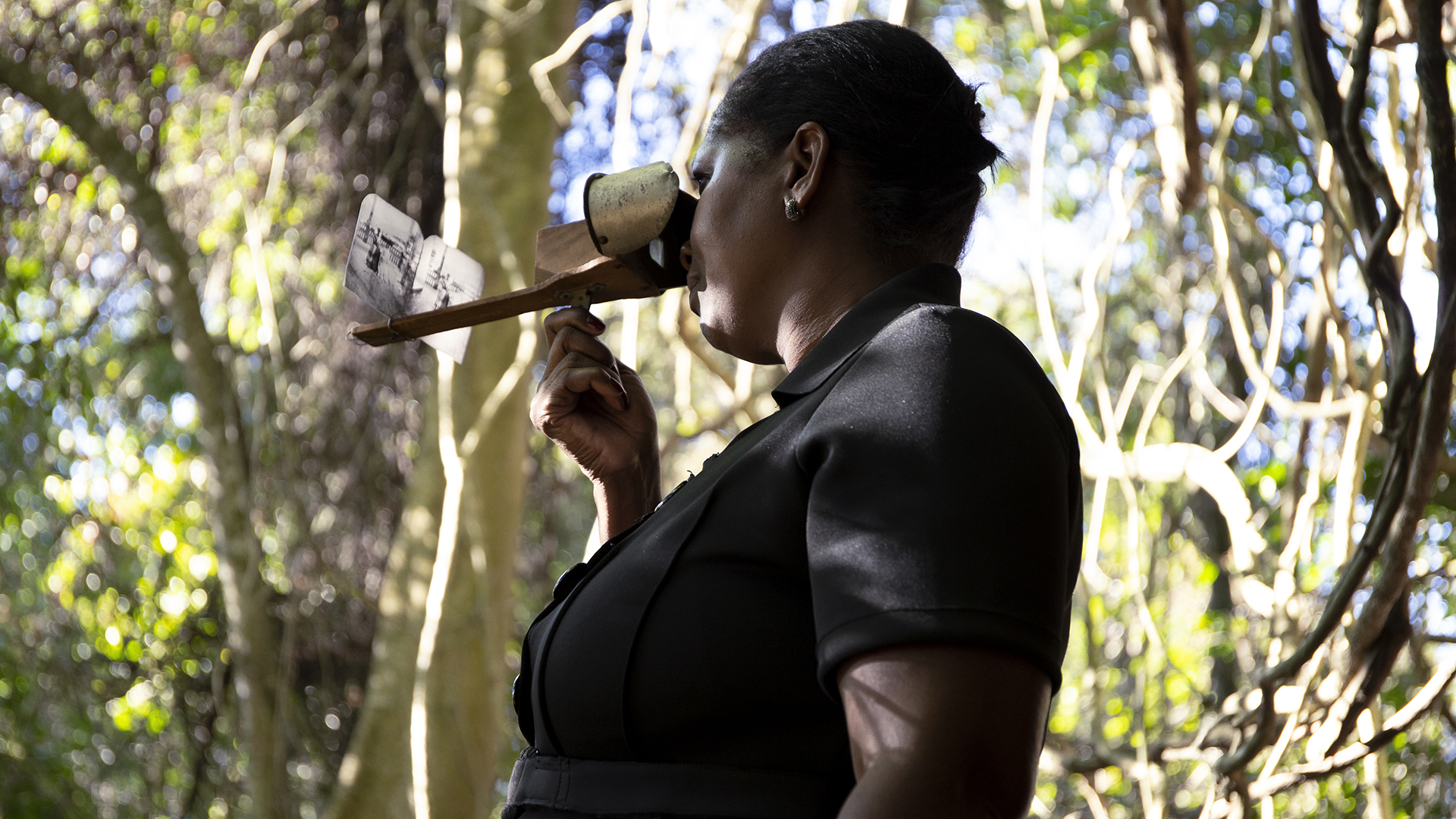
AUF: Sometimes I ask myself what it is that I find so fascinating about your practice. I love your films; They’re immersive and delicate and put forward a unique poetry regarding the context and social realities in which they’re anchored. I’ve had the privilege to think with you in some of the stages of the making of these works. And what I’ve seen is something we might call an ethnographic engagement, a process of inquiry that I think is at the core of your work. You’ve traveled to Nigeria, to Sierra Leone, and to many parts of Brazil for research. And over these past years, these films, these complex artworks, have been exhibited all around the world in installation form. In fact, there has been substantial interest internationally in your work. You’ve been part of a notable Sharjah Biennale, and your work was part of the ‘Chosen Memories’ exhibition at MoMA, which opened late April 2023.
AM: It’s interesting that you mention the Sharjah Biennial. This was a game changer for me in terms of the finance that accompanied the project. My works take time to complete, and sometimes even when they are completed, I keep adding other things. The Sharjah Biennial project, for example, is actually based on a text. Last year, I published this text, and it has become my first book. I think it’s a fiction book, but people here in Brazil are calling it poetry. It was important for me that it be published by a regular trade publisher and not be like a specialist artist book. I generally work in a way in which one project connects to another. And I’ve been busy recently on the film for the 2023 São Paulo biennial. I’m not sure it’s fully ready, it’s 30 minutes long at the moment, and I want it to be a feature length film. Perhaps it will be more like an hour and a half. Overall, 2023 has been a very special year for me, I’ve been fortunate to participate in important exhibitions, and my career has shifted in a sense. My photographs and a video were acquired by the MoMA collection. It’s been a long journey.
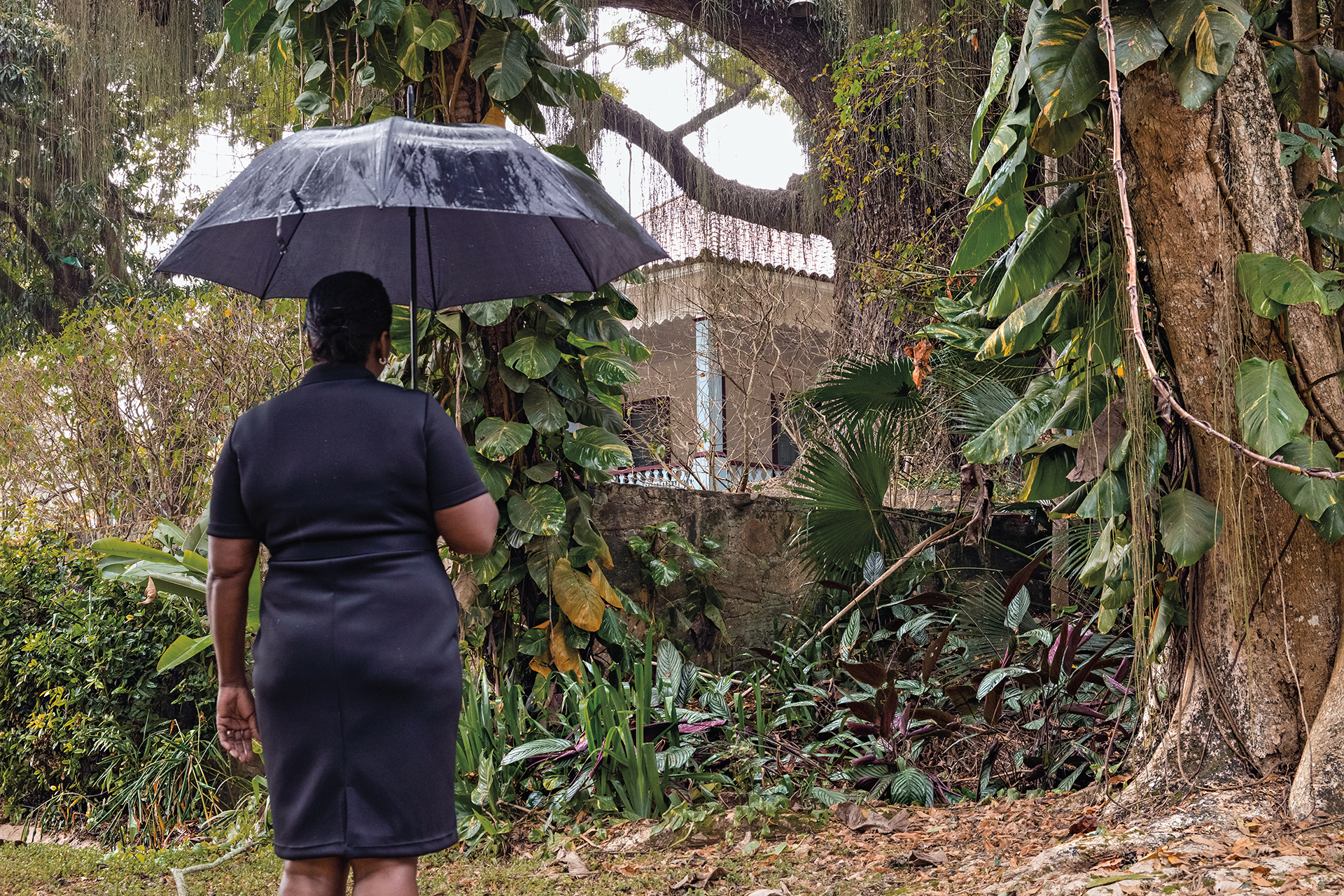
AUF: There’s an interesting dialogue in your work between different worlds and different temporalities. How do you understand and deal with temporal questions in your practice?
AM: My work is transdisciplinary because I really have to delve deep into things that are unknown, or things that were not evident at the time. And film is a medium that really supports different temporalities. With film, you can really combine different timelines into one single frame. I started with still photography, so every frame in my film is composed in a way that encompasses the past, proposes a presentification of the past, and looks squarely into the future. I work to connect temporalities through each frame so that each frame can contain everything all at one. In Brazil, we speak a lot about Leda Maria Martins’ notion of ‘spiral time’, or in the original Portuguese tempo espiralar, and she articulates really clearly how ancestral knowledge functions as a spiral, as opposed to in linear form. When we talk about spiral time, we can think of the circle, echoing the sun’s journey in the sky. So each time you accumulate different things, in a non-linear manner, you’re always looking back onto what happened previously. And that’s how I build my work. It seems very abstract when we talk about spiral time and the condensing of temporalities but when you see my work, you see that the soundtrack is going one way and the images are put together like a quilt of references and places. Hopefully people can really sense in a more corporeal way the theoretical basis of critical fabulation and what it means to experience the world in a non-linear manner, the notion of spiral time.
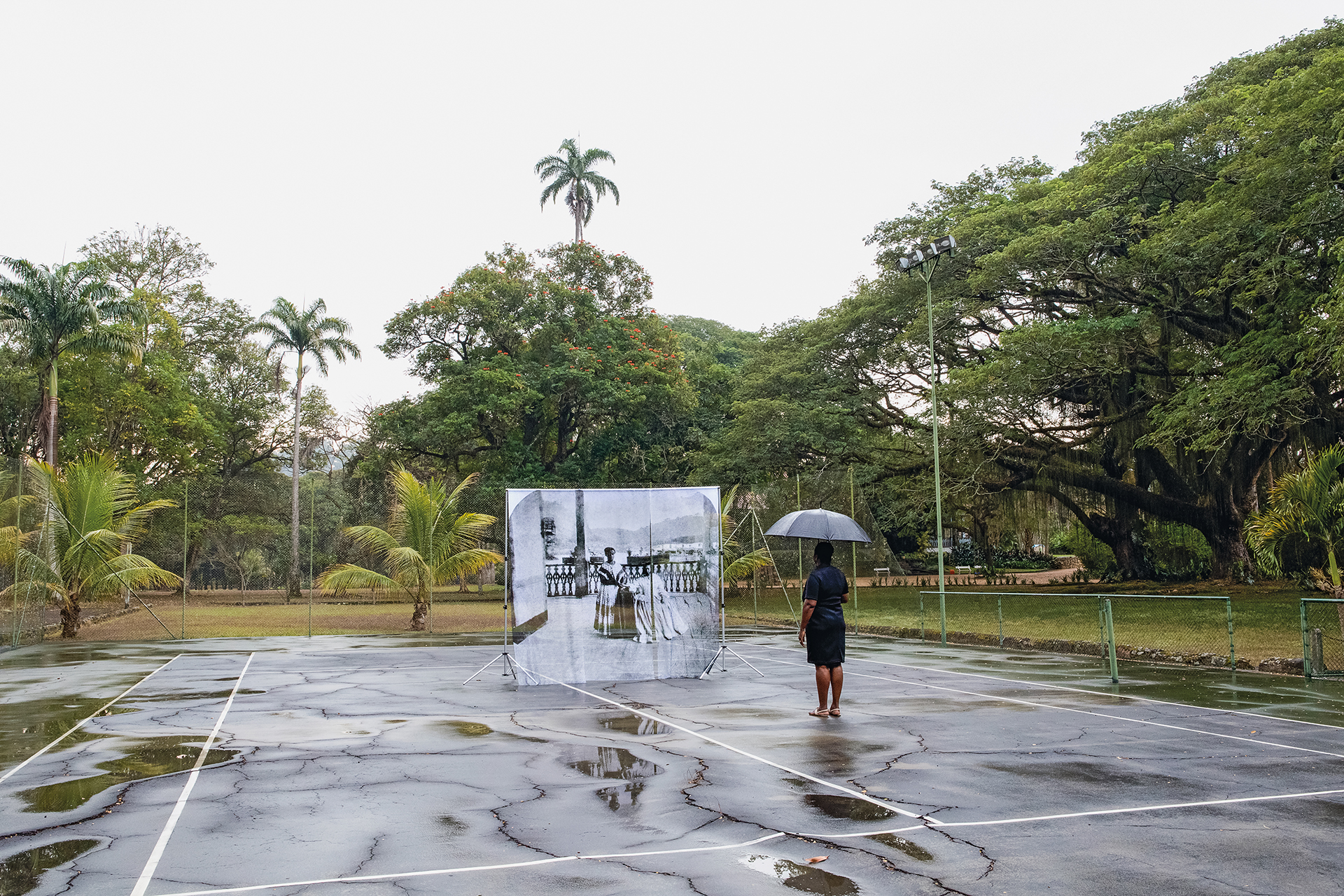
For example, the connection between Brazil and the Congo, the manner in which it reverberates now, the manner in which it has reverberated over the centuries, is still very much alive. When people talk about tradition it may seem like something that has passed or is on the verge of passing, but when a Black grandmother talks about tradition, she’s talking about the food that she cooks, the way she raises her children, the way she deals with the family budget, the way she deals with her land, and the placing of the backyard at the center of the house, its most important position. Our grandmothers understood what to cultivate, they understood the curative properties of herbs. And grandmothers in this sense, doesn’t necessarily refer to an elderly woman, in fact it’s not necessarily not about age or gender, it’s more a position from which to understand life.
AUF: Is the voice of an author or an artist important for you? You’ve hinted at a collaborative dimension; how do you understand the notion of voice in your work?
AM: I think we go back to the idea of authorship. We think of our communities, Black communities, Indigenous communities, and how they approach this question. Who are the authors of things? Who are the authors of visual patterns? Who are the authors of song, or prayers or dances? Who created that impossible choreography? What is inspiration? Inspiration seems such an elite thing, right? Imagine someone saying, ‘I was inspired to write this book, I was inspired to make this sculpture’, as if it were a kind of heavenly intervention. For me, it’s been thirty years of seeking to give shape to things. But I really like this idea of a voice and also thinking about collective voices, and being a mediator of these collective voices, of this collective family. I was lucky that my grandmother lived to the age of 101; I had almost forty years to look up to her. I remember so many parties in my family and the idea that it was a collective effort to cook for that many people. There were performances, we would often create something theatrical or musical. I remember gathering together for so many events and celebrating every single step of each person’s achievement: someone got a job; someone got into university; we would celebrate every act as a collective effort. I think my work reflects that collective voice. And although it seems very specific, that I’m talking about my specific grandmother and her particular trajectory, I’m really referring to and trying to touch upon this collective, ancestral knowledge.
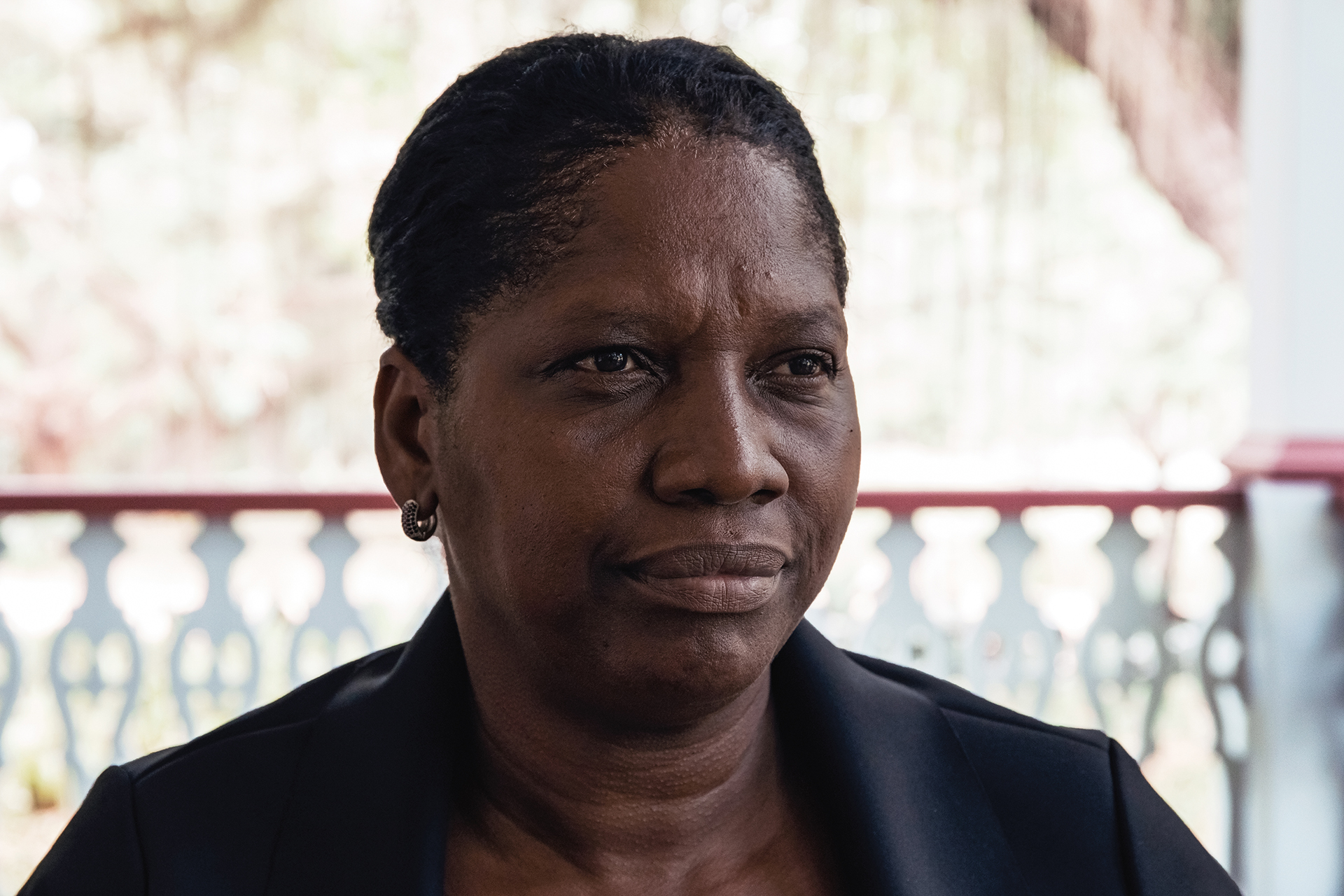
AUF: Lastly, this is a two part question. The first part is, how do you begin your work? What are the things that inspire you to begin your work? What do you feel when you look at archival family photos? And then, second, what are you excited about right now? What is it about the São Paulo Biennale that has moved you?
AM: I always thought that artistic practice would be more like a type of shared learning. For me, art and education are really intertwined. Sometimes people think about education and pedagogies of teaching. How do you learn something? How does something become crystal clear in your mind? How do you understand what’s happening inside of you and around you? And how can you intervene? How can you react to things? My practice comes in part from that impulse to create work that can be shared, and I understand there is a contradiction here: I see my work in museums, people are obliged to pay to gain entry, and there is a sense of monumentalization, musealization. Within an institution, is that the best way to show my work? Maybe it’s just another one of the multiple ways that the work can be shown. And I think that’s why I’ve been working on performative reading. It’s taken me a while to actually call it a performance. Part of me just wanted to define this part of my practice as a reading with a video mapping projection. But that’s too cumbersome and doesn’t work. So I started terming this means of sharing my work as a performance. And I feel it’s important to reach out to a broader audience, I feel this very strongly, especially being from Brazil. Because it’s a way of expressing, in a sensitive, in a delicate way, as you mentioned, a different aspect of the work. It speaks to the idea that our work is alive, that it imbued with life, that it is literally “animated”. It’s not that it’s complete of course, each person can take a little bit and create their own narrative or add their own thoughts and feelings. The work seeks to expand itself, to keep expanding and spiraling, and every time people see it, they will hopefully see something different. It’s intricate, and it took me years to write a single word. It took me so long to come to that very synthetic verse or that particular poetic phrasing. It took me so long to reach that thinness, that delicate construction that I hope will spark many viewings and many readings over time, seeing how far it can go, all the while bringing up those things that we don’t see in the moment that we are here.
Comments
There are no coments available.